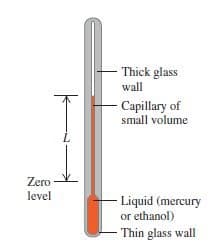Converting Celsius to Fahrenheit For UTME

In other to convert degree Celsius to Fahrenheit, you will have to make use of an equation. The equation can also be used vice-versa.
There are three types of scales for measuring temperature, and they are
- The Celsius scale
- The Fahrenheit scale
- The absolute scale (Kelvin)
The lower and upper fixed point for a Celsius scale is 0oc to 100oc while for a Fahrenheit scale, it is 32of and 212of.
In order to covert, you will use c/5 = f-32/9. The c represent the value for the Celsius while the f represents the value for the Fahrenheit.
Read: Temperature measurement
50C
c/5 = f-32/9
c = 50
substitute, 50/5 = f-32/9
10/1 = f-32/9
Cross multiply
10*9 = 1(f-32)
90 = f -32
Make f the subject of the equation
F = 90 +32 = 122
Therefore, 50c to Fahrenheit is 122oF
30C
c/5 = f-32/9
c = 30
substitute, 30/5 = f-32/9
6/1 = f-32/9
Cross multiply
6*9 = 1(f-32)
54 = f -32
Make f the subject of the equation
F = 54 +32 = 86
Therefore, 30c to Fahrenheit is 86oF
60C
c/5 = f-32/9
c = 60
substitute, 60/5 = f-32/9
12/1 = f-32/9
Cross multiply
12*9 = 1(f-32)
108 = f -32
Make f the subject of the equation
F = 108 +32 = 140
Therefore, 60c to Fahrenheit is 140oF
40C
c/5 = f-32/9
c = 40
substitute, 40/5 = f-32/9
8/1 = f-32/9
Cross multiply
8*9 = 1(f-32)
72 = f -32
Make f the subject of the equation
F = 72 +32 = 104
Therefore, 40c to Fahrenheit is 104oF
45C
c/5 = f-32/9
c = 45
substitute, 45/5 = f-32/9
9/1 = f-32/9
Cross multiply
9*9 = 1(f-32)
81 = f -32
Make f the subject of the equation
F = 81 +32 = 113
Therefore, 45c to Fahrenheit is 113oF
100C
c/5 = f-32/9
c = 100
substitute, 100/5 = f-32/9
20/1 = f-32/9
Cross multiply
20*9 = 1(f-32)
180 = f -32
Make f the subject of the equation
F = 180 +32 = 212
Therefore, 100c to Fahrenheit is 212oF
